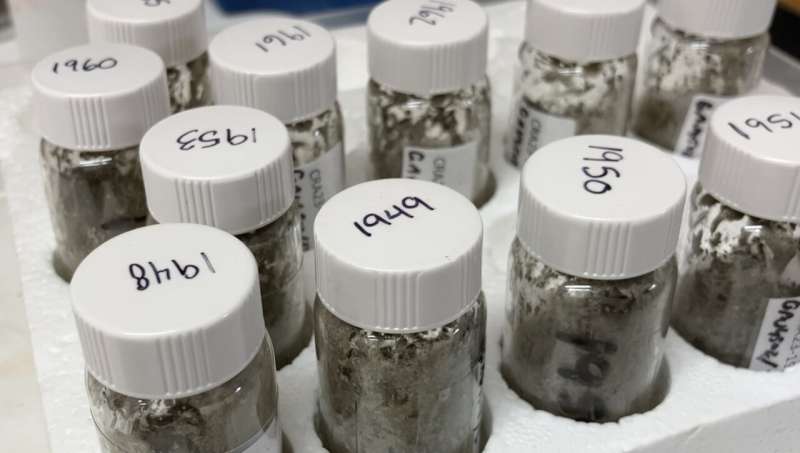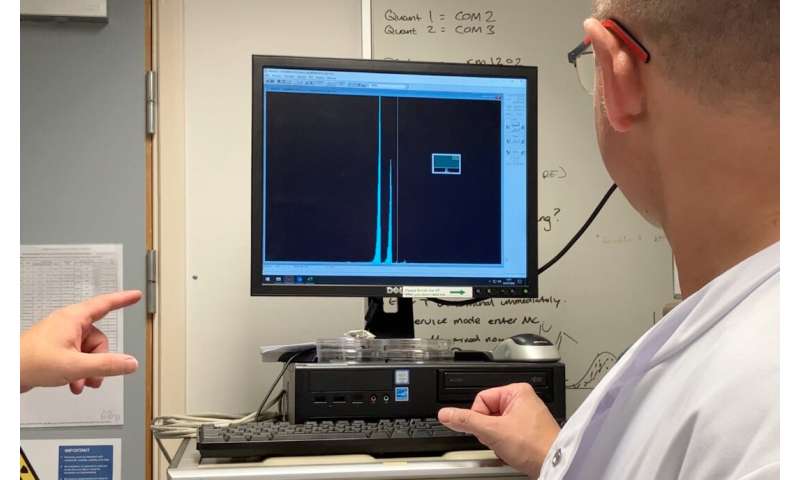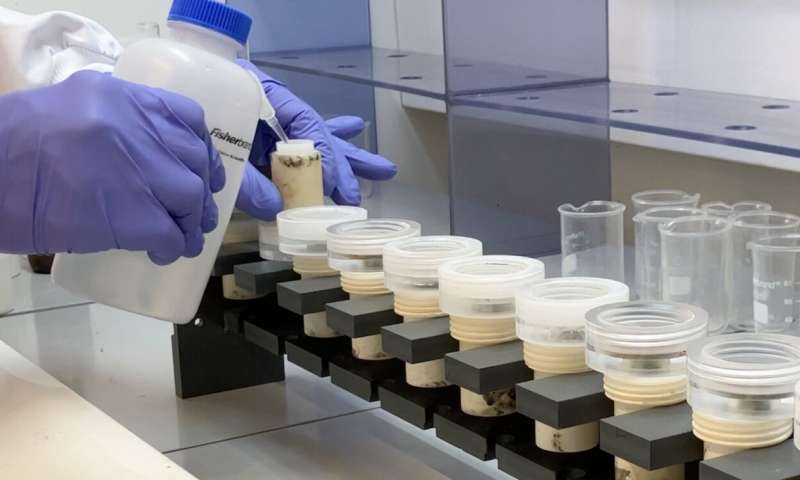
An international team of researchers has chosen the location which best represents the beginnings of what could be a new geological epoch, the Anthropocene.
The Anthropocene Working Group have put forward Crawford Lake, in Canada, as a Global Boundary Stratotype Section and Point (GSSP) for the Anthropocene. A GSSP is an internationally agreed-upon reference point to show the start of a new geological period or epoch in layers of rock that have built up through the ages.
It’s been proposed by some geologists that we are now living in the Anthropocene—a new geological epoch in which human activity has become the dominant influence on the world’s climate and environment.
The concept has significant implications for how we consider our impact on the planet. But there is disagreement in the scientific community about when the Anthropocene began, how it is evidenced and whether human influence has been substantial enough to constitute a new geological age, which usually span millions of years.
To help answer these questions, the International Commission on Stratigraphy (ICS) set up the Anthropocene Working Group.
“The sediments found at the bottom of Crawford Lake provide an exquisite record of recent environmental change over the last millennia,” says Dr. Simon Turner, Secretary of the Anthropocene Working Group from UCL.
“Seasonal changes in water chemistry and ecology have created annual layers that can be sampled for multiple markers of historical human activity. It is this ability to precisely record and store this information as a geological archive that can be matched to historical global environmental changes which make sites such as Crawford Lake so important. A GSSP is used to correlate similar environmental changes seen in other sites worldwide, so it is critical to have a robust and reproducible record at this type locality.”
The team has gathered core sample sections from a variety of environments around the world, from coral reefs to ice sheets. Samples from a range of these sites were then sent for analysis to the University of Southampton’s GAU-Radioanalytical labs at the National Oceanography Center in Southampton. Researchers there processed the samples to detect a key marker of human influence on the environment—the presence of plutonium.
-

Alpha spectrometry output showing the presence of plutonium. Credit: University of Southampton
-

Chemical digestion of Crawford Lake samples to extract plutonium. Credit: University of Southampton
Other geological indicators of human activity include high levels of ash from coal-fired power stations, high concentrations of heavy metals, such as lead, and the presence of plastic fibers and fragments. These coincide with “The Great Acceleration”—a dramatic surge across a range of human activity, from transportation to energy use, starting in the mid-20th century and continuing today.
From the hundreds of samples analyzed, the core from Crawford Lake has been proposed as the GSSP, along with secondary supporting sites that show similar high-resolution records of human impact. Evidence from the sites will now be presented to the ICS, which will decide next year whether to ratify the Anthropocene as a new geological epoch.
Citation:
Crawford Lake chosen as the primary marker to identify the start of the Anthropocene epoch (2023, July 15)
retrieved 16 July 2023
from https://phys.org/news/2023-07-crawford-lake-chosen-primary-marker.html
This document is subject to copyright. Apart from any fair dealing for the purpose of private study or research, no
part may be reproduced without the written permission. The content is provided for information purposes only.

